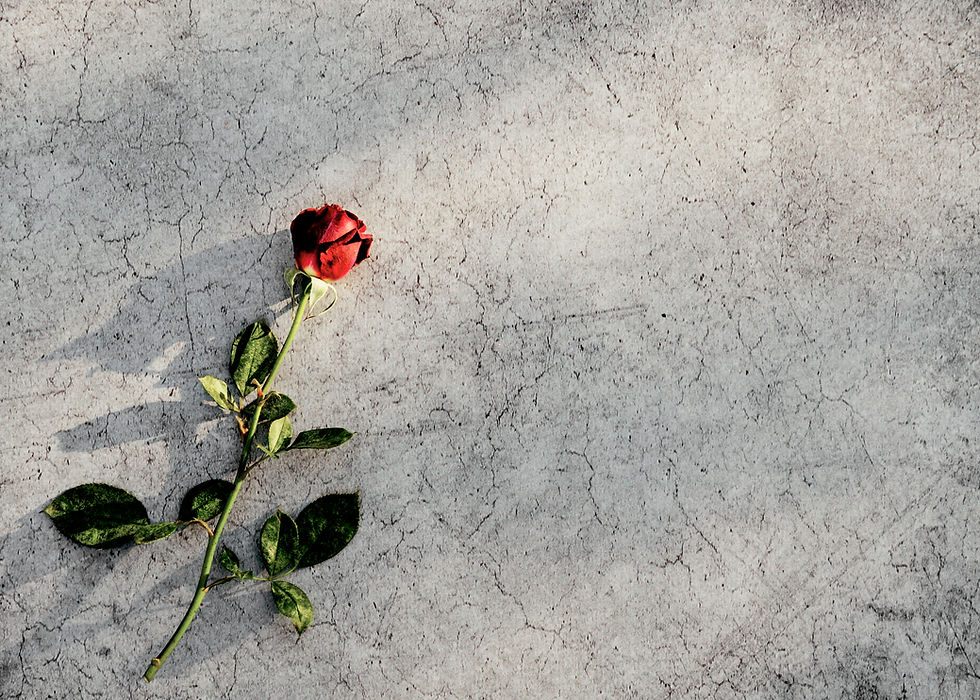What's the value of Black life in the murder capital?
- Cierra Chenier

- May 18, 2023
- 6 min read

Every day, a different headline. Shootings, carjackings, homicides. Those on both sides of the gun are getting younger and younger. We’re often reminded that even women and children are not off-limits, an unwritten code that is at least supposed to be upheld. No neighborhood is exempt, although specific neighborhoods are more vulnerable. It doesn’t matter if it’s late-night or broad daylight, a busy street or an abandoned one. New Orleans is no stranger to crime, with deeply-rooted issues that have disproportionately contributed to its destabilization since the early days of its colonial existence. We aren’t the only city facing rising crime, with ongoing stressors contributing to surges nationwide. However, this city is our home and for many of us, all we’ve ever known. We deserve a high quality of life, a full life, that should not come at the price we pay for being from and living in the greatest city in the world.
To be clear, we didn’t get here overnight. We are living in consequence of the decisions that were and were not made post-Katrina. Some argue that “New Orleans was never safe,” often citing our infamous “deadliest year” of 1994, where the city spiked to the murder capital at 424 homicides. We closed out 2022 as the nation’s murder capital again, this time at 280 homicides. Despite the constant denial of this reality, its impacts are overwhelmingly present in the daily hypervigilance we experience and the detrimental toll it takes on our nervous systems. It’s present in the conflict of whether to take the interstate given the increase in interstate shootings or to take the ground, given the increased carjackings. We are now at a point where the city is seemingly governing itself, with many of us avoiding red lights and stop signs altogether to ‘prevent’ carjacking. It feels as if this current state of New Orleans has been accepted as the norm, with no reassurance or sense of priority unless we have made national news or tourists are coming to town. Then as a trauma response, we slip back into regularly scheduled programming until we receive the next news alert.
When I grew up in New Orleans East before Katrina, violence had not directly impacted me yet in my neighborhood. As I reached adolescence, citywide gun violence would slowly give me the feeling of, “It’s getting too close” until 2015 and 2017, where “close” was an understatement. The rage I’ve felt since is a placeholder for the numbness I refuse to submit to. I often ask myself, “How did we get here?” and land on the constant disregard for human life, our lives. This led me to write about Black New Orleans history and reassert the value of our lives, contributions, and claims to our home.
How have we been shown throughout history that our lives hold value, which creates a sense of value for life itself? How are we reminded that a Black life in New Orleans is worth living?
Gentrification is violence.
The disregard for our lives is learned behavior. Addressing violence would also mean addressing how the aggressive displacement of people from their neighborhoods is by definition, violent. Gentrifiers realized or not, are indirect participants in the issue they now feel impacted by. The process of snatching up neighborhoods after disaster to live “close to the culture” (that noise complaints are now filed against), contributed to the uprooting of communities from where they were historically tied to. Consequently, this destabilized a city bound to its neighborhoods and displaced historic residents across the city. Black communities have been compartmentalized and compromised, left vulnerable and etched out of the resources that only come when the transplants do. The village that once raised the child is slipping away, as New Orleans is growing unfamiliar to those whom it belongs to.
The crime disproportionately associated with New Orleans East is a byproduct of the gentrification across other parts of the city. The East and Lower 9th Ward bore much of the catastrophic damage from Hurricane Katrina. The ‘powers that be’ debated the sustainability of these predominantly Black communities rebuilding, despite eastern New Orleans being the city’s largest land mass. An established community that boasted: a mall, movie theater, amusement park, chain restaurants, natural landscape, and various businesses went forgotten after the storm. Simultaneously, Black natives across Uptown and Downtown were displaced from their communities to make way for those who still think they live in “South 7th Ward” and carry entitlement over our generational homes.
People were pushed out to The East without the return of the amenities that initially made this community an example of Black upward mobility and Black New Orleans’ possibilities. The negligence of The East has left it vulnerable to blight, stagnancy, and crime, with the Little Woods area leading the top 3 neighborhoods with the highest murder rates in 2022. Immediately following is Central City, then the 7th Ward. From 2019-2021, the 3rd District (consisting of Mid City, Fairgrounds, Gentilly, West End, and Lakeview) experienced “the largest (150%) increase in major violent crime” by carjacking.
The narrative is often, “I’m not going to The East” in response to the crime, and yet, the same logic has not hindered attendance at an Uptown Super Sunday, made anybody avoid the 7, or tarnished the reputation of Lakeview. The current stereotype of The East as ‘disposable’ and ‘crime-ridden’ lacks the analysis of how we got here and unjustly impacts the revitalization it deserves. Black people in every part of New Orleans deserve to live full lives with access to quality housing, food, safety, education, and entertainment. As progress makes its way to The East soon, the plague of gentrification lingers not too far behind. We would wanna be holding on to The East for dear life.
Poverty is violence. Poverty and unlivable wages simultaneous with rising rent and inflation, are violent. Despite the racist, classist stereotypes that suggest otherwise: people living in poverty are not the cause of violence or crime. Therefore, creating concentrated poverty by isolating these communities, pricing them out beyond city limits, or ‘checking a box’ with mixed-income developments is not, and never will be a solution. Dismantling the unjust conditions–such as 32% of Black households living below the poverty line–that breed violence is the only way we can even begin to address it.
The trauma plaguing our communities before and after Hurricane Katrina is a prelude to violence. HBO’s Original Documentary Katrina Babies by Edward Buckles Jr. is a comprehensive analysis of this assertion and provides context to the current state of New Orleans and its youth. It cinematically and unapologetically centers the young voices, including my own, forgotten after the storm and unearths trauma for the journey towards healing.
“These are all our children. We will profit by, or pay for, what they become.” - James Baldwin
If we’re going to constantly talk about “these kids” or “youth violence,” we must also address the present conditions and failures we left them to inherit. As a city, we’re operating under a narrative that young people are the sole perpetrators of crime, alleviating accountability from adults and those in positions of power. Let’s also examine the present condition WE have perpetrated–a city they can’t afford to live in, where their culture is extracted, city services are subpar and monopolized, an education system turned experiment, and their mental state–an afterthought.
Reducing crime requires intention, not just reaction. No more dragging of feet, political theatre, or the same surface-level suggestions of years past! A crime plan is not preventing crime if it is only contingent on policing. New Orleans lies in what has been the reoccurring mass incarceration capital of the world. If it was possible to eradicate crime through this method, we would certainly be living in the safest place on Earth by now.
Community leaders and longtime activists, youth and youth advocates, mental health professionals, and artists should be leading the plans for solutions. Conversations about youth crime should take place WITH youth. Mental health and trauma must be the center and foundation of every conversation. There must be a drastic reallocation of future city budgets to reflect the immediate needs of mental health and affordable housing. The concern for reducing crime should be year-round, not just when the murder rate is record-breaking or only when we as individuals feel directly impacted.
We have a shared responsibility to this place. The New Orleans we’ve always known and loved was made possible by those who fought endlessly for better conditions for its people. It’s time we confront violence at its root, not just the surface. We cannot afford to continue laying asphalt over the potholes; merely putting band-aid solutions over the real problems. There’s blood embedded in the soil of this city..it’s time to treat the wound to actually heal.



First let me just say how beautifully written this was. I felt every emotion in every word. Thank you for writing this masterpiece and spreading awareness about what taking place within our city. Better days are ahead.
I really appreciate this article. We hear about what's going on in your city but we aren't (people on the outside looking in) but we do not get into it to really understand what you all are going through 🙏🏾 I will continue to pray for you all, in New Orleans and surrounding areas I will lift you all up in prayer and pray for strength that we all make it through this because it is happening in my city as well it makes you feel helpless as well as trapped.Thank you for painting this vivid and similar portrait to what Black Americans reality in our communitinties.